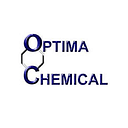What are the Different Types of Atomic Layer Deposition
Although technically a chemical vapour deposition (CVD) method, atomic layer deposition (ALD) is a bottom-up nanofabrication technique that has gained recognition as a distinct class of deposition techniques. While there is a conventional approach to using ALD, this article will go over various alternatives, most of which rely on the material being deposited or how the interactions between the surface and film precursors are started.
ALD is a technique that has attracted a lot of attention for creating coatings and thin films with nanoscale dimensions on various substrates. The use of ALD precursors creates extremely conformal thin films/layers that may be applied to multiple geometrically challenging surfaces, including spherical particles. And at Optima chem, Ald precursor manufacturing happens to be our speciality.
Battery electrodes, semiconductor technologies (including solar cells), transistors and other electronic parts, microelectromechanical systems (MEMS), medication administration, and tissue engineering applications are just a few of the scientific domains where it has been applied.
Different Types of Atomic Layer Deposition
Thermal Ald
Higher temperatures are occasionally needed, even though most ALD techniques use a controlled approach to atomic vaporisation. This is frequently the case for some molecules, especially those containing aluminium. Thermal ALD typically operates in the 150–350 °C temperature range. The most prevalent illustration is the production of Al2O3, which is produced when water and trimethylaluminum react on the surface of a substrate.
Metal ALD
By using elimination processes between a halogen-functionalized metallic molecule (often a metal fluoride) and a silicon-based molecule, a variety of metals (other than aluminium) can be deposited on a surface. Exothermic fluoro silane elimination reactions are employed in most metal ALD procedures to deposit metal on substrate surfaces. Similar to thermal ALD, metal ALD may deposit various metals at temperatures ranging from 175 to 325 °C.on a surface. Even though thermal and metal ALD precursors use higher temperatures than other methods, the temperatures used are significantly less than other CVD methods.
Particle Ald
Particle ALD is quite similar to traditional ALD. Particle ALD is focused on covering the full surface of a particle, in contrast to conventional ALD methods, which concentrate on a flat or slightly curved surface (including the surface of nanoparticles). A particle’s character may be coated with various materials, with excellent uniformity and conformability, without missing any portions of the particle. This technique is distinctive because it is one of the few that can handle the intricate coating geometry of spherical particles while fundamentally applying the ALD principles.
Other ALD Methods
Other ALD methods that use low temperatures include plasma ALD and photo-assisted ALD. A wide variety of precursor materials can be used with plasma. ALD, which lowers the temperature of molecular vaporisation. Contrarily, photo-assisted ALD does not need a high temperature to start reactions since it employs ultraviolet (UV) light to create and speed up surface reactions on the substrate. Because the UV light’s illumination period, intensity, and wavelength can all be adjusted, this approach is simple to manage.
Need to get in touch with professionals to sort out your needs? Kindly contact us.
